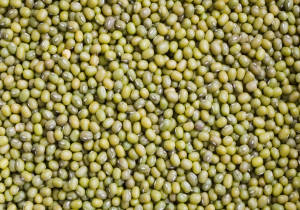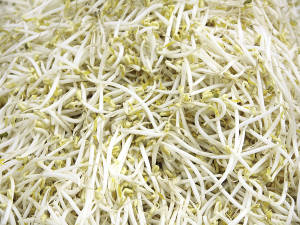Mung beans are an easy to grow bean that can be eaten as a bean or as a sprout. They are much more popular in Asian cooking than Western. Mung beans are sometimes turned in to a paste and their flour can reportedly be used as a soap substitute!
Planting Mung Beans
Mung beans are best grown without transplantation. Sow in rows 15 inches (40cm) apart. It’s easiest to sow in drills and thin them as they grow to about 8 inches (20cm) apart.
Mung beans like deep soil that is well-drained. They don’t like soils at the sandy end of the spectrum. Pre-treating the soil with organic matter a month before sowing will ensure that it is rich enough for the mung beans.
Growing Mung Beans
Mung beans need regular water. The temperature that they enjoy most is around 30°C. In tropical climates it is barely necessary to water them at all during the wet, but they like an inch or two of water per week in drier areas.
Sprouting Mung Beans
Mung beans are the most common bean from which ‘bean sprouts’ are grown. Soy beans are also frequently used.
Be careful to obtain organic or ‘untreated’ seeds, that is, seeds that have not been chemically treated. The chemicals will remain on the seeds and be poisonous.
To sprout your seeds, find a jar that will hold the seeds that you require and a layer of water on top that will be the same height as the beans. You may need to use multiple jars if sprouting a large number of beans.
Before placing the beans in a jar, wash them thoroughly until the run off water is clean. Then place them in a jar, along with twice the volume of water as there is beans. Cover the jar with a mesh or cloth top and use a rubber band to secure it. Leave for 8-12 hours. Then drain the jar through the mesh or cloth. It’s a good idea to leave the jar positioned upside down on an angle to allow constant drainage.
Once or twice a day, rinse the beans and drain again (you don’t need to take the cloth or mesh off). This will keep them disease free. Leave the jar(s) in a cool, dry place away from direct sunlight. After a few days your beans will be fully sprouted.
Harvesting Mung Beans
If harvesting for seed, collect them before they split. If harvesting shoots, grab them when they are 1-2 inches (2.5-5cm) long. Sometimes the seed coats will still be attached – soak them in water for a short period then chop the seed and shoot tip off.
Threats To Mung Beans
Rots and fungus are the most common afflictions. Use a fungicide to control fungus as it presents, and be wary of soil moisture and spacing to try and prevent rots.


